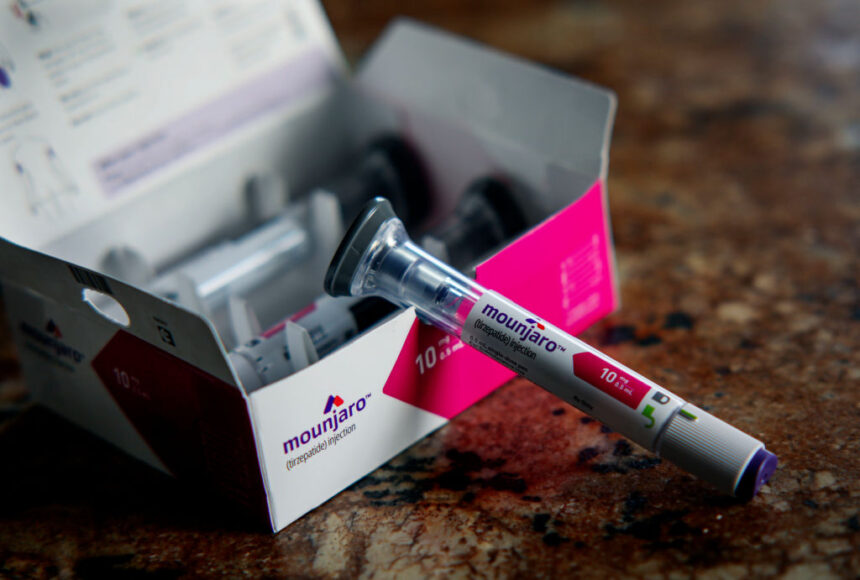Most of the huge groundswell for the two most common diabesity drugs — Eli Lilly’s tirzepatide and Novo Nordisk’s semaglutide — has been driven by backchannels.
That ranges from TikTok testimonials and celebrity talk to doctors chatting with each other online about what they’ve been seeing anecdotally.
Systems for monitoring efficacy and safety have lagged behind what people who are using or prescribing the drugs are saying and feeling. Moreover, while placebo-controlled clinical trials have found tirzepatide’s weight loss to be most favorable, a formal head-to-head study involving those with obesity is still in progress.
However, in one post-marketing analysis, patients taking tirzepatide were more likely to shed pounds — and more of them — than those on semaglutide. The two products appeared similar when it came to side effects.
“To our knowledge, this study represents the first real-world comparative effectiveness study of tirzepatide and semaglutide in adults with overweight or obesity,” wrote authors of the paper, which was posted earlier this month on MedRxiv, the repository for non peer-reviewed research.
The study, based on a database known as Truveta which mines EHRs from a group of health systems, provides not only an indication of whether the weight loss observed in Mounjaro’s and Ozempic’s randomized controlled trials will generalize to real-world populations.
It also provides a glimpse into what we may see with recently approved obesity drug Zepbound, a version of tirzepatide which heretofore had only been sanctioned for diabetes under brand name Mounjaro, and how it stacks up against Novo’s Wegovy, whose active ingredient (semaglutide) is the same as Ozempic’s.
Truveta’s study only looked at the doses of tirzepatide and semaglutide approved by the Food and Drug Administration for type 2 diabetes, possibly limiting its findings. While Mounjaro’s highest approved dosage is the same as that of Zepbound, Wegovy is a higher-strength version of its active ingredient.
Clinical trials had suggested a clear edge for Mounjaro. The Lilly drug was associated with 22.5% weight loss at week 72 in Lilly’s SURMOUNT-1 trial (or about 20% at the week 48 timepoint).
In contrast, Wegovy led to approximately 14.9% mean body weight loss at week 68 in patients who followed a protocol in Novo’s STEP trial.
Breaking down the weight loss numbers
While inside the tightly managed research environment, tirzepatide’s efficacy seemed to be on par with bariatric surgery, “in the wild” its weight-loss effects could have differed. Truveta’s results confirmed the effects were “broadly consistent” with existing trial evidence, researchers noted.
Patients taking tirzepatide were significantly more likely to lose weight. For instance, they were three times more likely than those taking semaglutide to achieve 15% weight loss.
Over time, the tirzepatide takers also experienced significantly larger reductions in body weight than those on semaglutide. At three months, the mean percentage change in body weight was -5.9% versus -3.6%. That gap widened at six months (-10.1% versus -5.9%) and again at one year (-15.2% versus -7.9%).
However, more than half (55.1%) of patients stopped taking the drugs during the study period. Medication shortages during the study “may have resulted in higher discontinuation than expected,” authors noted.
The analysis also found that weight loss was greater for patients without type 2 diabetes than for those with evidence of type 2 diabetes – regardless, those taking Mounjaro lost a greater percentage of their starting weight. That said, rates of gastrointestinal adverse events were similar between the two. Gastroenteritis was the most common GI side effect, with 21 and 19.1 cases per 1,000 person-years at risk for tirzepatide and semaglutide, respectively.
The findings were based on an adjusted population of 18,000 patients, out of a total patient population of over 40,000 patients with overweight or obesity initiating either semaglutide or tirzepatide between May 2022 and September 2023.
Per their medical records, just under half (48%) had no history of type 2 diabetes, which led researchers to assume this cohort of more than 9,000 people was probably taking the medications off-label for weight loss.
Truveta’s EHR dataset links with pharmacy dispensing data and the database captures all patients, not just the insured. That’s important because populations without type 2 diabetes may not be captured in pharmacy claims data alone, since off-label use of these medications is unlikely to be covered by insurers.
“GLP-1 medications have already changed the way physicians treat type 2 diabetes and obesity, but little real-world data exist to compare the effectiveness of the two most common medications,” noted Nick Stucky, VP of Truveta Research, in a Monday announcement.
Novo Nordisk, which makes Ozempic for diabetes and Wegovy for weight loss, objected to the study’s conclusion, noting an apples-to-oranges comparison.
“The analysis does not consider that semaglutide for chronic weight management – Wegovy – has maintenance dose strengths of 1.7 mg and 2.4 mg, which are different than the maintenance dose of Ozempic for type 2 diabetes,” a spokesperson said in a statement.
Nor have the doses of semaglutide that were studied been investigated for chronic weight management, the company added.
A single study — Lilly’s SURPASS-2 — that evaluated the glucose-lowering effect of tirzepatide (5 mg per week) compared to semaglutide (1 mg per week) when added to metformin in patients with type 2 diabetes found that 5% weight loss was achieved by 69% and 58%, respectively.
A Lilly-sponsored trial comparing tirzepatide to semaglutide in patients with overweight or obesity, but without diabetes, is underway. That trial, dubbed SURMOUNT-5, is expected to read out in 2025, a Lilly spokesperson said.
Added Stucky, a practicing physician, “We’ve been able to compare the head-to-head efficacy of these two important medications for weight loss in advance of randomized clinical trials. This study can help to inform patient care and outcomes today, not months from now.”
This story has been updated with a statement from Novo Nordisk as well as additional context about the analysis.







